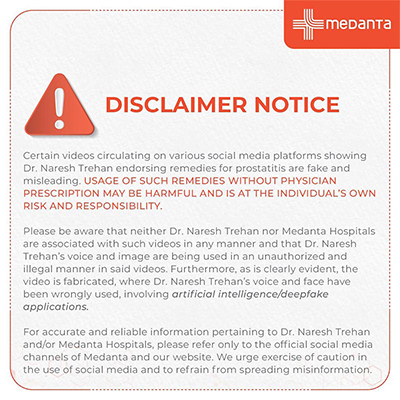What Are the 5 Types of Sexually Transmitted Infections?
TABLE OF CONTENTS
Sexually transmitted infections (STIs), also known as sexually transmitted diseases (STD), are a growing concern in today's society. These infections are caused by viruses, bacteria, and parasites that can be transmitted through sexual contact. From chlamydia to HIV, STI can have serious health consequences if left untreated. The good news is that with proper education, prevention, and treatment, the spread of STIs can be prevented and controlled. In this blog, we will explore the different types of STIs, the scope of the problem, and the importance of prevention, diagnosis, and treatment. So, buckle up and get ready to learn about the ins and outs of STI.
Overview
Sexually transmitted infections (STIs) are a major public health concern, affecting millions of people each year. These infections are caused by viruses, bacteria, and parasites that can be transmitted through sexual contact. Common STIs include chlamydia, gonorrhea, HIV, and syphilis, and can lead to serious health consequences if left untreated.
Sexually Transmitted Infection Types
Here are some common sexually transmitted infection types.
Chlamydia
Chlamydia is a bacterial STI that affects the genital tract.
It is the most reported STI in the United States and can lead to infertility if left untreated.
Chlamydia can be spread through intimate sexual activities, including vaginal, anal, and oral intercourse.
Symptoms can include painful urination, discharge from the genital area, and pain during intercourse.
If diagnosed early, chlamydia can be treated with antibiotics.
Gonorrhea
Gonorrhea is another bacterial STI that can affect the genital tract, rectum, and throat.
Untreated chlamydia can result in infertility.
Gonorrhea is transmitted through sexual contact and can cause symptoms such as discharge from the genital area, painful urination, and pain during intercourse.
Like chlamydia, gonorrhea can be treated with antibiotics if diagnosed early.
Herpes
Herpes is a viral STI that causes painful blisters or sores on the genital area, mouth, or anus.
There are two types of herpes viruses, herpes simplex virus 1 (HSV-1) and herpes simplex virus 2 (HSV-2), both of which are highly contagious and can be transmitted through sexual contact.
Herpes is a chronic condition and cannot be cured, but the symptoms can be managed with antiviral medications.
Common symptoms of herpes include painful blisters, itching or burning in the genital area, and flu-like symptoms.
It is important to inform sexual partners about a herpes diagnosis to prevent further transmission.
HIV
Human immunodeficiency virus (HIV) is a stealthy invader that targets the body's immune system, ultimately leading to the development of acquired immunodeficiency syndrome (AIDS).
The virus spreads through the exchange of bodily fluids, such as blood, semen, vaginal secretions, and even breast milk. It is a silent attacker that can wreak havoc on the body if left unchecked.
The early symptoms of HIV can be like the flu, but the virus can progress to AIDS if left untreated.
Antiretroviral therapy (ART) can help manage the symptoms of HIV and slow the progression to AIDS.
It is important to practice safe sex and get regular testing to prevent the spread of HIV.
Trichomoniasis
Trichomoniasis is a parasitic STI that affects the genital area.
It is caused by a parasite called Trichomonas vaginalis and is transmitted through sexual contact.
Symptoms of trichomoniasis can include itching, burning, and discharge from the genital area.
Trichomoniasis can be treated with antiparasitic medications, but it is important to inform sexual partners to prevent further transmission.
Scope of the problem
The Centers for Disease Control and Prevention (CDC) estimates that there are approximately 20 million new cases of STD in the United States each year.
STI can be caused by bacteria, viruses, and parasites and can be transmitted through sexual contact, including vaginal, anal, and oral sex.
Some STIs are treatable with antibiotics, while others, such as herpes and HIV, are chronic and cannot be cured.
The cost of treating STI is also a concern, with the total cost in the US estimated to be around $16 billion annually.
Prevention of STIs
When it comes to sexually transmitted infections, prevention is key. Unfortunately, there is no guaranteed way to protect yourself from STIs, but there are steps you can take to greatly reduce your risk.
Abstinence: The Only 100% Effective Option
Abstinence from sexual contact is the only 100% effective way to prevent STD. This means not engaging in any sexual activities that could lead to the exchange of bodily fluids. While this option may be the safest, it is not a realistic choice for many people.
Condoms and Other Barrier Methods
For those who are sexually active, the use of condoms and other barrier methods is an effective way to reduce the risk of STI transmission. Condoms, dental dams, and female condoms can all help prevent the exchange of bodily fluids that can lead to STIs. It's important to use these methods consistently and correctly to achieve maximum protection.
Reducing the Number of Sexual Partners
Another way to reduce the risk of STIs is to limit the number of sexual partners you have. The more partners you have, the greater your risk of exposure to STIs.
Regular Testing
Even if you are being proactive in your prevention efforts, regular testing is still important. Regular testing helps ensure early detection and treatment of any STI. This is especially important for people who are sexually active, as many STD may not show any symptoms.
Diagnosis of STIs
Regular testing is important for sexually active individuals to ensure early detection and treatment of STI.
Testing can be done through blood tests, urine tests, or swabs taken from the genital area.
It is important to inform your healthcare provider about any symptoms you may be experiencing, as this will help them determine which tests to perform.
Conclusion
Sexually transmitted infections are a growing concern that requires our attention and action. Understanding the different types of STIs, their symptoms, and their transmission routes is crucial in preventing their spread. Regular testing, reducing the number of sexual partners, and using barrier methods are all effective ways to reduce the risk of STI transmission.
It's important to remember that STI can affect anyone, regardless of their sexual orientation, age, or gender. With that in mind, it's crucial that we all take a proactive approach to protecting our health and the health of those around us. Whether it's through regular testing, using barrier methods, or simply talking openly about STIs, we can all play a role in preventing their spread.


